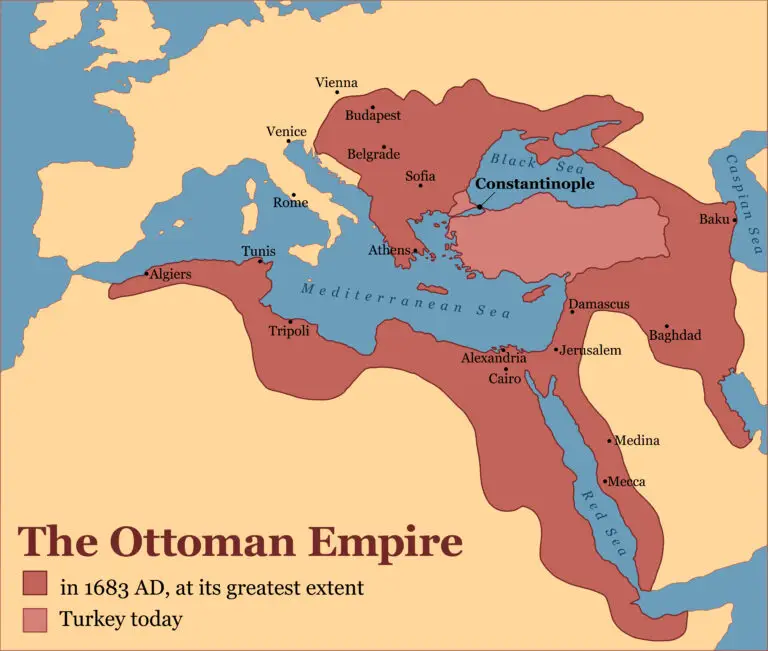Ottoman Empire

Table of Contents
What was the Ottoman Empire?
The Ottoman Empire was a vast and influential state that spanned across Southeast Europe, Western Asia, and North Africa, existing from the 14th century to the early 20th century. Founded by Osman I in the late 13th century, the Ottoman Empire rose to prominence under Mehmed II, who captured Constantinople in 1453, marking the end of the Byzantine Empire.
The empire reached its peak during the 16th and 17th centuries under Suleiman the Magnificent, expanding its territory to encompass much of the Mediterranean basin, the Balkans, and parts of Eastern Europe. The Ottoman Empire was characterized by its multicultural and multi-religious society, with Muslims, Christians, and Jews coexisting under Ottoman rule.
However, by the 19th century, the empire faced internal strife, economic decline, and pressure from European powers, leading to its gradual dissolution. The empire officially came to an end after World War I, with the signing of the Treaty of Sèvres in 1920, which dismantled the Ottoman Empire and led to the establishment of modern-day Turkey.
Ottoman Empire History
The Ottoman Empire, also known as the Turkish Empire, was a vast and influential Islamic state that existed from the late 13th century to the early 20th century, centered around present-day Turkey and extending into Southeast Europe, the Middle East, and North Africa.
The empire was founded by Osman I in the late 13th century and expanded rapidly under subsequent rulers, eventually becoming one of the world’s most powerful and enduring empires.
The Ottoman Empire reached its peak during the reign of Suleiman the Magnificent (1520-1566), who expanded its territory into Eastern Europe, North Africa, and the Middle East, and presided over a flourishing cultural and intellectual renaissance known as the “Golden Age.”
The Ottoman Empire was a multi-ethnic and multi-religious state, with Muslim Turks forming the ruling elite but also incorporating various ethnic and religious groups, including Christians, Jews, and others, into its diverse population.
The Ottoman Empire was known for its system of governance, which combined centralized authority with local autonomy, with the Sultan serving as the supreme ruler and caliph of Sunni Islam.
Istanbul (formerly Constantinople) served as the capital of the Ottoman Empire and was one of the world’s most important cultural and commercial centers, linking Europe and Asia.
The Ottoman Empire played a significant role in European history, particularly in the Balkans and Eastern Europe, where it clashed with the Habsburg and Russian Empires over control of territory and influence in the region.
The Siege of Vienna in 1683 marked a turning point in the Ottoman Empire’s expansion into Europe, as it suffered a decisive defeat against a coalition of European powers led by the Habsburgs.
The decline of the Ottoman Empire began in the late 17th century and continued through the 18th and 19th centuries, as it faced internal strife, economic challenges, and territorial losses.
The Treaty of Sèvres in 1920 and the subsequent Treaty of Lausanne in 1923 led to the dissolution of the Ottoman Empire and the establishment of the modern Republic of Turkey.
Related Links
Ancient Egypt
Congress of Vienna
Genocide
Mongol Empire